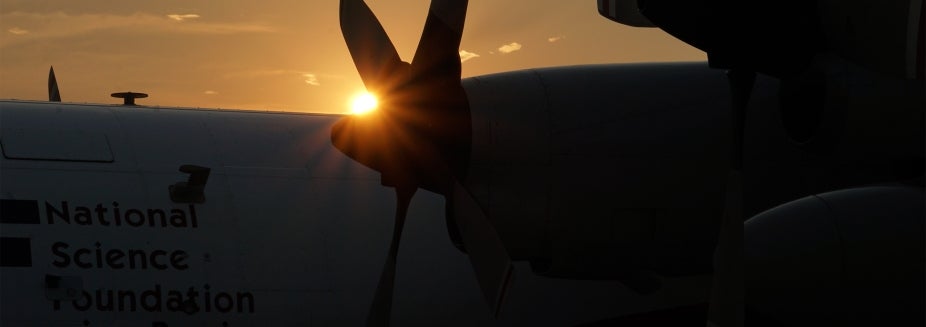WE-CAN Field Project Teacher Guide

The C-130 research aircraft on the runway of the Boise Airport during the WE-CAN field project.
This classroom activity explores wildfires and air quality using videos and data from the Western Wildfire Experiment for Cloud Chemistry, Aerosol Absorption and Nitrogen (WE-CAN) field project.
Teacher Guide downloads as a Zip file [10.7 MB] and includes:
- WE-CAN Teacher Guide
- Summary of WE-CAN Videos
- WE-CAN Video Ready Print Activity
- Geography Extension Student Worksheet
- Geography Extension Answer Guide
Last updated: March 2022
Grade Level
Middle School & High School, with adaptions for introductory Undergraduate courses
Learning Goals
- Students will describe how the WE-CAN field project collected data from many different wildfires across the western United States to study how smoke changes over time and that the data will help evaluate and improve air quality models
- Students will discuss how field projects like WE-CAN are active areas of research and can lead to improved forecasting models (in this case, for air quality)
- High School Extension: Students will describe how scientists are studying the interactions of smoke with clouds and sunlight during a wildfire and how WE-CAN is studying the dynamic nature of smoke over time, distance, and layers of the atmosphere
Time
One class period (45-60 minutes). Geography extension requires a second class period.
Next Generation Science Standards
- PE MS-ESS3-2 Analyze and interpret data on natural hazards to forecast future catastrophic events and inform the development of technologies to mitigate their effects.
- PE HS-ESS2-2 Analyze geoscience data to make the claim that one change to Earth's surface can create feedbacks that cause changes to other Earth systems.
- PE-MS-ESS3-2: Analyze and interpret data on natural hazards to forecast future catastrophic events and inform the development of technologies to mitigate their effects. (Geography Extension)